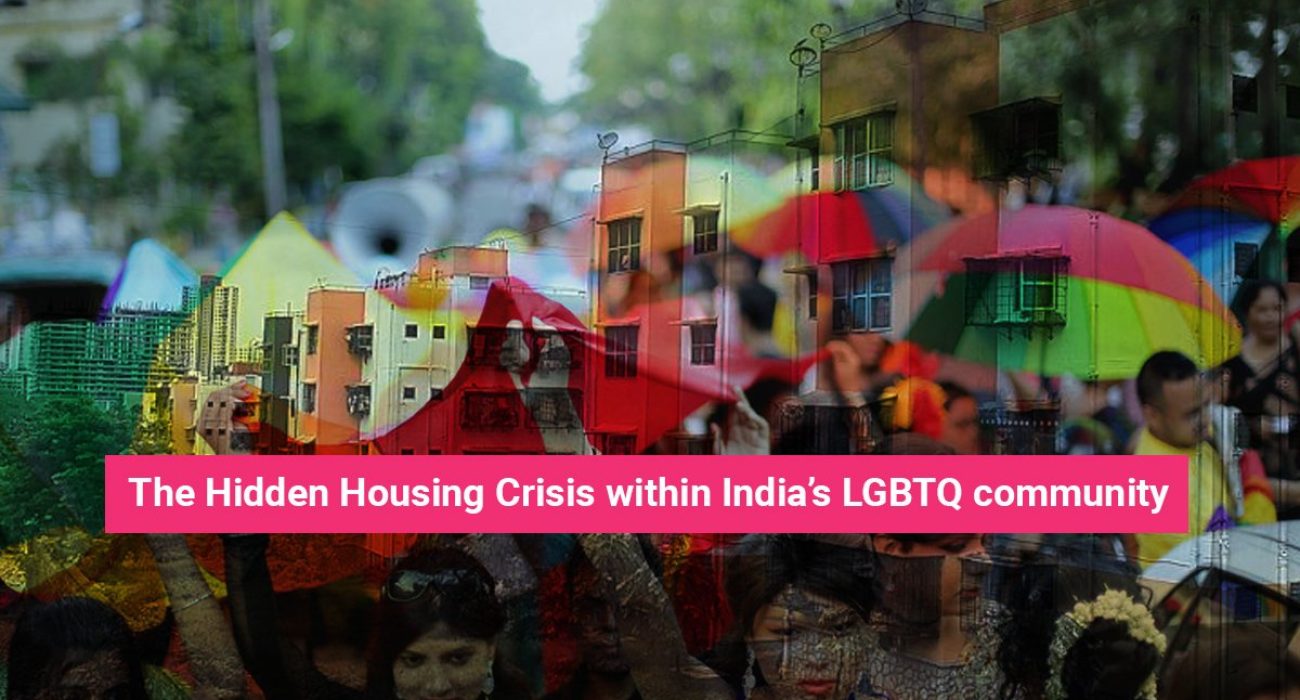

The Govt of India estimates approximately 2.5 million gay people, says a Reuters piece on Section 377. This could be a conservative number, as a lot of Queer folks choose to remain closeted and/or may not want to engage with the Government consensus.
The Transgender Persons (Protection of rights) Act of 2019 along with the historic NALSA and Navtej judgments are a start of a brighter outlook for India’s Queer community. With the Madras High Court judge Anand Venkatesh giving guidelines from a socio-cultural lens to enact measures to ensure rights of the Queer community; it might seem that India is on the brink of a Queer revolution.
However, according to an International Commission of Jurists (ICJ) report from 2019, LGBTQ folks still face a monumental amount of discrimination. We will be focusing on housing discrimination the Queer community faces and the different facets of housing discrimination.
There are several international treaties that have been enacted to protect the rights of the LGBTQ community, by the United Nations (U.N). One such multilateral treaty by the United Nations Committee on Economic, Social, and Cultural Rights (UNESCR) is the International Covenant on Economic, Social and Cultural Rights (ICESCR). The ICESCR was ratified by India on 10th April 1979. The right to adequate housing is protected under International as well as Indian laws. The ICECSR provides the following provisions in the treaty:
What kind of discrimination do the LGBTQ community face in the housing sector?
The same report by the ICJ talks of discrimination faced by the Queer community based on Sexual Orientation and Gender Identity & Expression (SOGIE). Many Queer and/or Transgender tenants are facing physical and, oftentimes, sexual abuse at the hands of landlords and family members. There are many anecdotes, in the report, by LGBTQ folks from all-over the country (Caution is advised when reading, as it does talk about instances of rape, sexual assault, physical and verbal abuse etc.).
It is often fear of violence that prevents so many in the community to not return to their family homes or seek redressal for the violations of their rights by landlords, property owners and, even, family members.
In one such case, “B, a transgender man from Chennai talked about the violence he faced when he started expressing his gender identity:
‘At the age of 17, everybody at home hit me a lot and tried to break my knee. They wanted to break my knee so I can’t go out. They would take an iron rod and hit my knee. But I went out of the home. After that they caught me and brought me back home. They removed all my clothes except for one baniyan [innerwear/vest] and scratched my body with a knife. My whole body was bleeding, and it was happening in front of everyone in the family: uncle, sister, mother, brother, everybody. Nobody tried to stop the violence, and everybody wanted to hit me. They hit me a lot, but I said to myself that as a male I could not cry and I have to be very strong. I laughed at them. They said: ‘you laugh at us, it very shameful of you’, but I responded, ‘it’s shameful of you. it is not shameful for me. I will laugh with my body bleeding’.’”
Such instances of violence are highly common among the LGBTQ community and contribute to the high rates of homelessness within the community. However, homelessness in the LGBTQ population isn’t studied as extensively as it is in the U.S.A or other developed nations. There are several reports on homelessness among the LGBTQ population in the States, especially among the youth.
Most LGBTQ community members, move to bigger cities in hopes of escaping the abuse and to start life anew. This right to pursue a life of dignity is granted under law. “In the Chameli Singh case (1995), the Court identified the right to shelter as a fundamental right as a component of the right to life for all persons, which includes life with dignity (Article 21), and the right of all citizens to decide their place of residence and settle in any part of the country (Art. 19(1)(e)).”
Other than these obstacles faced by Queer and Transgender persons, most also face discrimination from housing authorities, property owners and brokers. According to an article in the Hindustan Times, “(t)heir ordeal starts when they get in touch with property agents, who charge a higher commission amount by saying that there are very few options and that it is a task to get a house for them.”
This is just the beginning of the woes of Transgender people seeking housing. Once Transgender people do have housing, the possibility of being bullied out of their homes are high. Nosey neighbours and landlords drive tenants out for the smallest grievances rather than talking it out; Queer and Transgender people are told to leave unlike their Cis Het counterparts. Intrusive questions from neighbours on why they dress the way they do, who are they bringing home, why don’t they have kids, are they married etc. are questions Queer and Transgender people must field on the daily.
Though, equitable housing seems like a distant dream for the Queer and Transgender community currently; we must not lose sight of the progress made by laws like the Transgender Persons (Protection of Rights) Act 2019. Subsidized housing and reservations can be a start for the marginalized and underserved community.
– Sanjla Perumal, Associate – Inclusion at Work
IAW resources
Browse our help directory